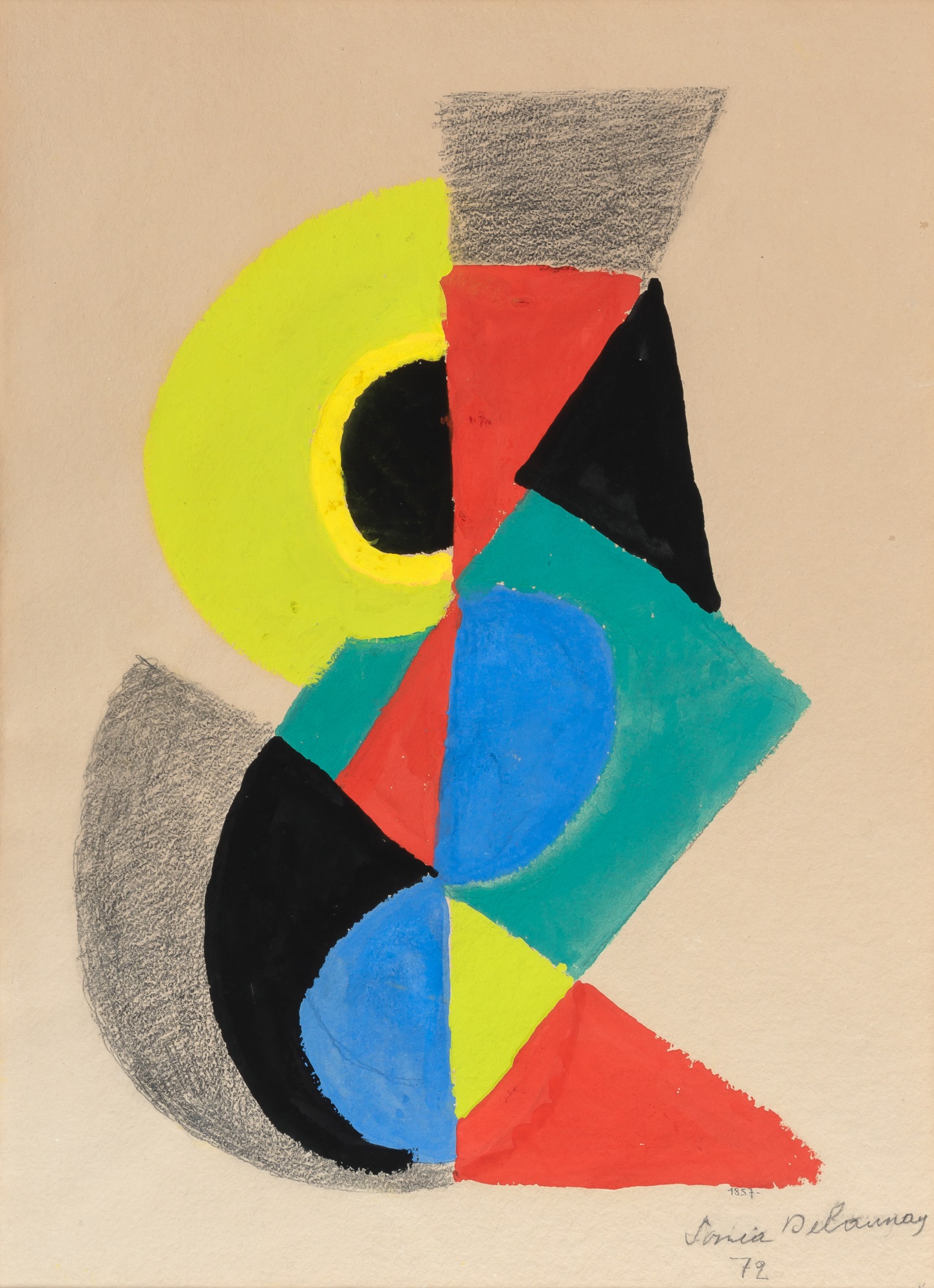
Sonia Delaunay
1885-1979
Born in Odessa, Sonia Delaunay's bold use of color and abstraction helped shape 20th-century modernism. A co-founder of the Orphism movement, she developed the concept of simultané, a theory of color harmony rooted in contrast and rhythm, alongside her husband, artist Robert Delaunay. Their shared vision challenged traditional boundaries between art and life, emphasizing the emotional power of pure color and geometric form.
Delaunay worked across painting, textiles, fashion, and stage design, seamlessly blending fine art with the applied arts. She drew inspiration from urban energy, folk traditions, and modern technology, channeling these themes into dynamic visual compositions. Her Paris-based Atelier Simultané became a hub for innovation, producing garments and interiors that reflected the dynamism of modern life. Notable collaborations included designs for the Ballets Russes and the 1925 Exposition Internationale des Arts Décoratifs.
In 1967, she became the first living female artist honored with a retrospective at the Musée National d’Art Moderne. Today, her work is held in major collections worldwide, including MoMA and the Centre Pompidou. Delaunay remains a key figure in modern art history, celebrated for her visionary usage of color, movement, and design.





